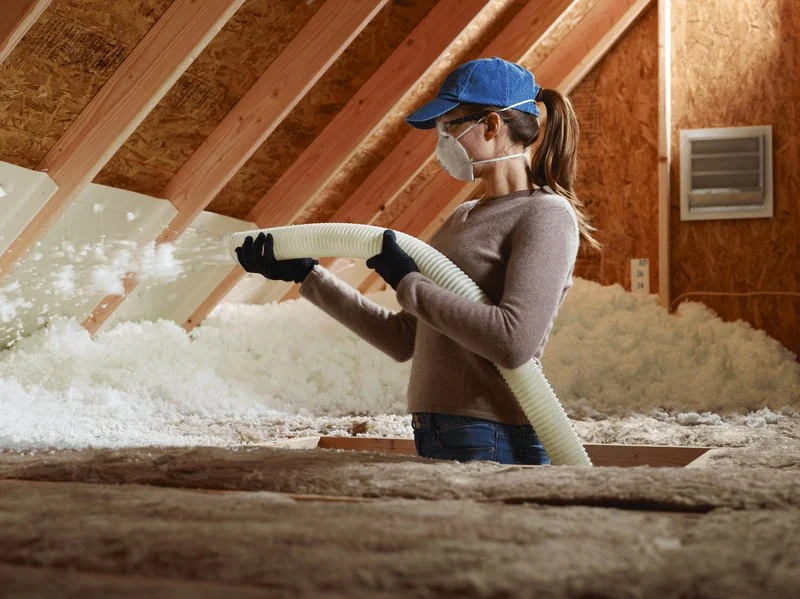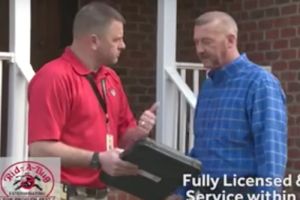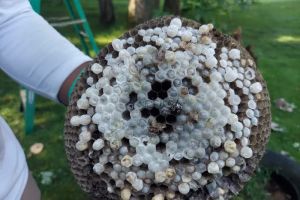
- Understanding-Attic-Infestations
- Signs-of-Pests-in-Attic-Insulation
- Common-Pests-Found-in-Attics
- Safe-and-Effective-Treatment-Methods
- Repairing-and-Replacing-Contaminated-Insulation
- Real-Case-Studies-and-Success-Stories
- Professional-Help-and-Prevention-Strategies
1. Understanding Attic Infestations
Attics are one of the most common hiding places for pests in U.S. homes. Warm, dark, and often undisturbed, these spaces provide the perfect nesting ground for rodents, insects, and even birds. The problem becomes even more serious when pests invade attic insulation — a material that not only hides them from view but also absorbs odors, droppings, and pathogens over time. Learning how to treat pest infestations in attic insulation is essential for maintaining both your home’s safety and air quality.
Unlike visible infestations in kitchens or basements, attic problems tend to go unnoticed until significant damage has occurred. The insulation may become contaminated with feces, urine, or nesting material, which can compromise energy efficiency and pose health risks to your family. Proper identification, cleanup, and treatment are key steps in eliminating these hidden invaders.
2. Signs of Pests in Attic Insulation
2.1. Noises and Movement
Scratching, squeaking, or rustling sounds from above the ceiling — especially at night — often indicate the presence of rodents or squirrels. These animals are most active after dark and may use attic insulation for nesting or tunneling.

Rid-A-Bug Pest Control
Pounding MillTazewell CountyVirginia
161 Pounding Mill Branch Rd, Pounding Mill, VA 24637, USA
2.2. Droppings and Urine Stains
Rodent droppings are small, dark, and pellet-shaped, while raccoon droppings are larger and can carry dangerous parasites. If you notice stains, discoloration, or foul odors in your insulation, these are strong indicators of pest activity.
2.3. Damaged Wiring or Insulation
Many pests chew on electrical wires, wood framing, and insulation materials. This not only increases fire risks but also reduces insulation effectiveness. Homeowners should visually inspect attics at least twice a year for bite marks, loose insulation, or torn vapor barriers.
3. Common Pests Found in Attics
3.1. Rodents (Mice and Rats)
Mice and rats are the most common attic invaders. They can squeeze through gaps as small as a dime and breed rapidly once inside. Their urine and feces contaminate insulation and can spread diseases such as hantavirus and salmonella.
3.2. Squirrels and Raccoons
These larger animals typically enter through roof vents or damaged soffits. They are capable of tearing up insulation for nesting material and may create multiple entry points, making removal more complex.
3.3. Insects and Termites
Carpenter ants, termites, and wasps sometimes infest attic spaces, especially if there’s wood rot or high humidity. They can cause structural damage while remaining hidden behind insulation layers.
4. Safe and Effective Treatment Methods
4.1. Step One: Identify and Seal Entry Points
Before any cleaning or treatment begins, it’s critical to locate and seal the entry points pests used to access the attic. Common openings include roof vents, soffits, chimneys, and plumbing gaps. Use metal flashing, hardware cloth, or expanding foam to block re-entry.
4.2. Step Two: Remove Contaminated Insulation
Insulation that’s heavily soiled or damaged should be removed carefully while wearing protective gear. Specialized vacuums and HEPA filters are recommended to prevent airborne contamination. Homeowners should avoid disturbing insulation without proper respiratory protection.
4.3. Step Three: Apply Safe Pest Control Treatments
Depending on the type of infestation, treatments can range from bait traps and rodenticides to eco-friendly repellents and enzyme cleaners. Professionals often use targeted sprays and ultrasonic deterrents to eliminate remaining pests without harming humans or pets. For severe infestations, fogging treatments or thermal remediation may be necessary to sanitize the area.
4.4. Step Four: Replace with Pest-Resistant Insulation
Once the attic is cleaned and sealed, replace the insulation with pest-resistant materials. Borate-treated cellulose or spray foam insulation can deter rodents and insects while improving energy efficiency. This investment not only restores your attic but also prevents future infestations.
5. Repairing and Replacing Contaminated Insulation
Contaminated insulation poses health hazards, including respiratory irritation and allergic reactions. Professionals recommend full replacement if over 25% of the insulation is damaged. After removal, the attic should be disinfected using antimicrobial solutions to kill bacteria, mold, and odor-causing microbes.
Homeowners can choose between fiberglass, cellulose, or spray foam replacements. Each has unique advantages, but pest-resistant cellulose insulation, treated with boric acid, remains a popular option for both pest control and thermal performance.
6. Real Case Studies and Success Stories
A family in North Carolina discovered that squirrels had torn apart their attic insulation during winter nesting. After removing the damaged material and sealing entry holes, they replaced the insulation with borate-treated cellulose. Two years later, their attic remained pest-free, and their energy bills dropped by nearly 15%.
In another case from California, a homeowner faced recurring rodent problems despite monthly pest control treatments. A full attic restoration — including vapor barrier installation and exclusion sealing — finally stopped the infestations. The homeowner credited consistent maintenance checks and better insulation for keeping pests out permanently.
7. Professional Help and Prevention Strategies
While DIY pest removal might seem tempting, attic infestations often require professional attention. Certified pest control technicians use specialized tools to inspect hidden areas, apply targeted treatments, and ensure safe cleanup of hazardous waste.
For U.S. homeowners seeking trusted attic pest solutions, PestControlHub offers expert reviews of pest-resistant insulation, professional pest removal services, and maintenance guides. With the right products and preventive care, you can ensure your attic remains both energy-efficient and pest-free year-round.








 Wildlife Resolutions4.0 (443 reviews)
Wildlife Resolutions4.0 (443 reviews) Pest Marshals of Toledo5.0 (2 reviews)
Pest Marshals of Toledo5.0 (2 reviews) LS Rodent Proofing & Pest Control Service5.0 (4 reviews)
LS Rodent Proofing & Pest Control Service5.0 (4 reviews) Best Termite & Pest Control4.0 (16 reviews)
Best Termite & Pest Control4.0 (16 reviews) Varment Guard Wildlife Services5.0 (28 reviews)
Varment Guard Wildlife Services5.0 (28 reviews) Pestban Inc4.0 (394 reviews)
Pestban Inc4.0 (394 reviews) How to Use Monitors to Detect Pest Entry: A Comprehensive Guide
How to Use Monitors to Detect Pest Entry: A Comprehensive Guide How to Predict Which Pests Will Invade Next – Smart Pest Forecasting for the U.S.
How to Predict Which Pests Will Invade Next – Smart Pest Forecasting for the U.S. How to Conduct a Pest Risk Assessment at Home – Expert Guide
How to Conduct a Pest Risk Assessment at Home – Expert Guide How to Block Pest Entry Around Deck Joists: Effective Solutions
How to Block Pest Entry Around Deck Joists: Effective Solutions How to Safely Use Fumigation Methods: A Comprehensive Guide for Homeowners
How to Safely Use Fumigation Methods: A Comprehensive Guide for Homeowners Why Pests Are More Active After Rain: Understanding the Link Between Weather and Pest Behavior
Why Pests Are More Active After Rain: Understanding the Link Between Weather and Pest Behavior